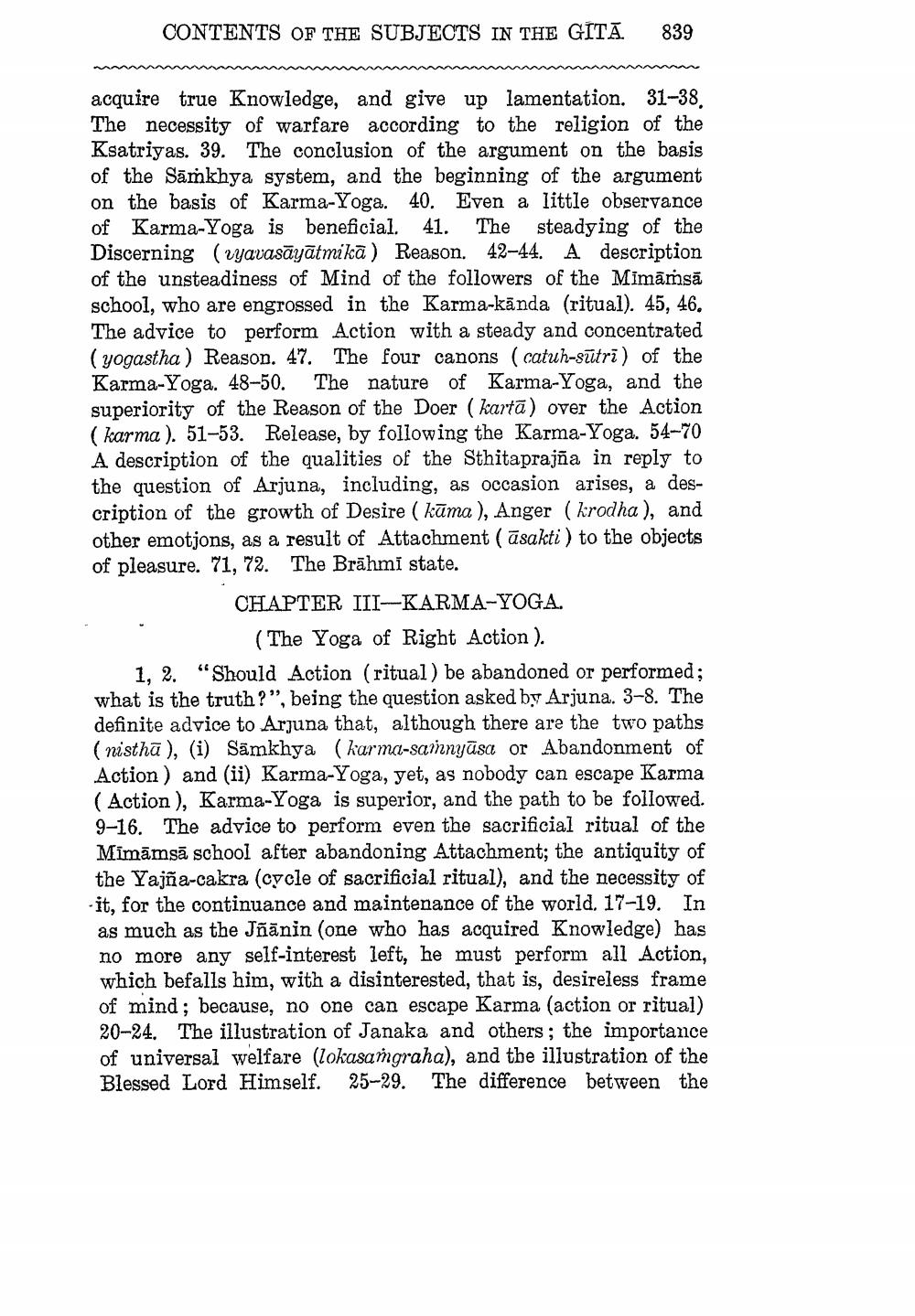________________
CONTENTS OF THE SUBJECTS IN THE GITĀ.
839
acquire true Knowledge, and give up lamentation. 31-38. The necessity of warfare according to the religion of the Ksatriyas. 39. The conclusion of the argument on the basis of the Sāmkhya system, and the beginning of the argument on the basis of Karma-Yoga. 40. Even a little observance of Karma-Yoga is beneficial. 41. The steadying of the Discerning (vyavasāyātmikā) Reason. 42–44. A description of the unsteadiness of Mind of the followers of the Mimāmsā school, who are engrossed in the Karma-kānda (ritual). 45, 46. The advice to perform Action with a steady and concentrated (yogastha ) Reason. 47. The four canons (catuh-sūtri) of the Karma-Yoga. 48-50. The nature of Karma-Yoga, and the superiority of the Reason of the Doer (kartā) over the Action ( karma). 51–53. Release, by following the Karma-Yoga. 54-70 A description of the qualities of the Sthitaprajña in reply to the question of Arjuna, including, as occasion arises, a description of the growth of Desire ( kūma), Anger (krodha), and other emotjons, as a result of Attachment (āsakti) to the objects of pleasure. 71, 72. The Brāhmi state.
CHAPTER III--KARMA-YOGA.
(The Yoga of Right Action). 1. 2. "Should Action (ritual) be abandoned or performed; what is the truth?”, being the question asked by Arjuna. 3-8. The definite advice to Arjuna that, although there are the two paths ( nisthā), (i) Sāmkhya ( karma-sainyāsa or Abandonment of Action) and (ii) Karma-Yoga, yet, as nobody can escape Karma (Action), Karma-Yoga is superior, and the path to be followed. 9–16. The advice to perform even the sacrificial ritual of the Mimāmsā school after abandoning Attachment; the antiquity of the Yajña-cakra (cycle of sacrificial ritual), and the necessity of it, for the continuance and maintenance of the world. 17-19. In as much as the Jñānin (one who has acquired Knowledge) has no more any self-interest left, he must perform all Action, which befalls him, with a disinterested, that is, desireless frame of mind; because, no one can escape Karma (action or ritual) 20-24. The illustration of Janaka and others; the importance of universal welfare (lokasamgraha), and the illustration of the Blessed Lord Himself. 25-29. The difference between the




